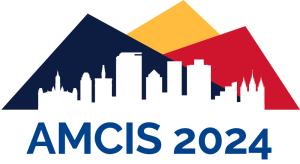Loading...
Abstract
Creativity, defined as the process of producing novel and useful ideas (Amabile 1996), is one of the keys to competitive advantage for modern organizations. Social media, and particularly enterprise social media (ESM) has emerged in the information systems (IS) literature as a potential driver of individual creativity (e.g., Dery et al. 2017). However, the extant literature focuses on the technical or the social aspects of ESM, thus treating the technology as either a technical or social tool. But ESM can also serve as an important source of information for employees. For example, many of the features of ESM can work as bridges that enable individuals to reach others, ask questions, and obtain information. When individuals encounter work-related problems, they can use the ESM to request information as all users in an ESM network are potential information resources. As the Chinese philosopher Confucius once said, "When I walk along with two others, they may serve me as my teachers. I will select their good qualities and follow them, their bad qualities and avoid them." Enterprise social media connects employees across the organization and provides users numerous (and varied) companions in their daily work life. The current study uses Amabile’s componential theory of creativity as the overarching theoretical framework, to examine the role of ESM in the production of creative outcomes. According to Amabile (1996), individuals’ creativity depends on their intrinsic motivation, domain-relevant skills, and creativity-relevant skills. Previous studies have proposed that higher intrinsic motivation will drive individuals spend more time and effort to search related information (Camaj 2019). Thus, the current study argues that individuals with higher intrinsic motivation will use ESM more as an information source to gather the information they want and learn from each other. This can lead to the accumulation of domain-relevant and creativity-relevant skills, ultimately influencing individual creative outcomes. Rather than focusing on a specific technology (e.g., smartphone), the current study uses an affordance perspective, in which a technology affordance is defined as an action possibility provided by a technology feature (Karahanna et al. 2018). By taking the affordance perspective, the current study focuses on users’ specific actions that allow the affordance to be actualized through the technology features instead of a type of technology (e.g., group support system) or specific software (e.g., Zoom). This allows us to look at user behaviors and outcomes without tying the discussion to a specific technology, and the results can be applied across actors, technologies, and contexts. Thus, the research question is: How can ESM affordances work as a bridge between intrinsic motivation and knowledge to facilitate creative outcomes? This study contributes to creativity and IS literature by exploring relationships between antecedents of creativity and guiding organizations in leveraging ESM for creative outcomes.
Paper Number
tpp1208
Recommended Citation
Zeng, Miaoyi and Armstrong, Deborah J., "The Influence of Enterprise Social Media Affordances on Individual Creativity" (2024). AMCIS 2024 TREOs. 3.
https://aisel.aisnet.org/treos_amcis2024/3
When commenting on articles, please be friendly, welcoming, respectful and abide by the AIS eLibrary Discussion Thread Code of Conduct posted here.


